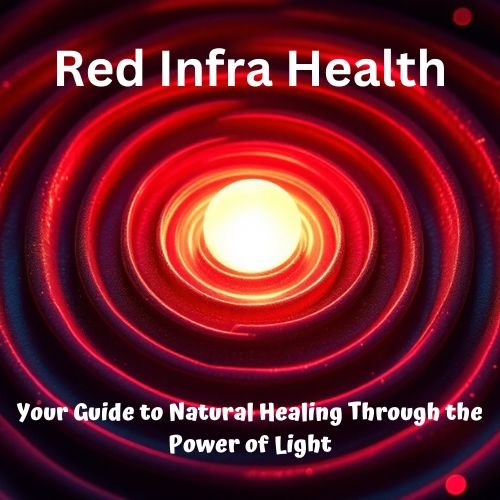You can protect your eyes naturally from cataracts by focusing on seven key strategies. Start by boosting your antioxidant intake through vitamin C-rich foods and leafy greens containing lutein. Shield your eyes from UV damage with quality sunglasses and wide-brimmed hats. Maintain a nutrient-rich diet with fatty fish, colorful fruits, and vegetables while limiting refined sugars. Stay active with regular exercise to improve blood flow to your eyes. Keep blood sugar levels stable through proper nutrition and hydration. Get annual eye exams to catch any issues early. These natural approaches can help safeguard your vision, but there's much more to discover about protecting your precious eyesight.
Optimize Your Antioxidant Intake

Your eyes' natural defense against cataracts relies heavily on antioxidants, which act as protective shields against harmful free radicals and oxidative stress.
To maximize your protection, you'll need to focus on key nutrients that have proven benefits for eye health. Vitamin C users can reduce their cataract risk by an impressive 77%, while vitamin E supplementation can cut the risk in half.
You can boost your antioxidant intake by consuming 5-9 servings of fruits and vegetables daily, with special attention to leafy greens and citrus fruits. Don't forget to include lutein and zeaxanthin-rich foods like eggs and spinach, which help neutralize harmful blue light and prevent oxidative damage. Regular vitamin users experienced one-third lower risk of nuclear cataracts when taking multivitamin supplements containing vitamin E.
Adding three servings of whole grains and two weekly servings of fish will provide essential nutrients and omega-3 fatty acids.
These antioxidants work through specific mechanisms to protect your eyes. Vitamin C guards ocular tissue from UV radiation and free radical damage, while vitamin E protects cell membranes.
Green tea's EGCG compound helps prevent crystallin aggregation in your lens. For thorough protection, maintain a diverse diet rich in these protective nutrients and consider a daily multivitamin to fill any nutritional gaps.
Harness Light Therapy Benefits
The emerging field of light therapy offers promising benefits for protecting your eyes before and after cataract surgery. Low-level light therapy has shown remarkable success in preventing dry eye complications, particularly when administered in two sessions – one before and one after surgery. Research demonstrates patients receiving light therapy experienced OSDI scores of 9.0 at one month after surgery, indicating significantly reduced eye discomfort.
| Benefit | How It Works | What You'll Notice |
|---|---|---|
| Better Tear Stability | Regulates cellular function | Improved comfort and less dryness |
| Enhanced Recovery | Supports meibomian glands | Reduced inflammation post-surgery |
| Preventive Protection | Acts on root causes | Lower risk of complications |
| Long-term Comfort | Improves eyelid health | Better overall eye comfort |
You'll experience significant improvements in tear film stability, with treated eyes showing better tear break-up times compared to untreated ones. If you're considering cataract surgery, you'll want to discuss this preventative approach with your eye care provider. While it's not a cure for cataracts themselves, light therapy can help protect your eyes from surgery-related dry eye complications.
Remember that while red light therapy offers some eye health benefits, it won't treat existing cataracts. You'll need proper medical intervention for that, but light therapy can be an excellent complementary treatment to support your recovery.
Balance Essential Eye Nutrients

You'll maximize eye protection by pairing nutrient-rich foods like leafy greens with fatty fish, creating powerful combinations that boost absorption of essential vitamins and antioxidants.
When you're planning meals, try combining vitamin E-rich nuts with vitamin C-rich fruits to enhance their protective effects against cataracts.
While a balanced diet should be your primary source of eye nutrients, you can fill any gaps with targeted supplements like AREDS2, following your doctor's guidance on proper dosage and timing.
Women should be especially vigilant about maintaining proper nutrition since hormonal changes can increase cataract risk.
Powerhouse Nutrient Food Combinations
Maximizing eye protection against cataracts requires strategic food combinations that amplify nutrient absorption and effectiveness. You'll get the most benefit by pairing foods that enhance each other's protective properties.
Combine vitamin C-rich oranges with iron-rich spinach, as vitamin C helps your body absorb iron more effectively while providing double protection against cataracts. Including fresh strawberries with these combinations provides additional vitamin C protection for your eyes.
Pair omega-3-rich salmon with leafy greens containing lutein and zeaxanthin to boost the absorption of these eye-protecting nutrients.
Add avocado to your spinach salad, as its healthy fats help your body absorb fat-soluble vitamins A, E, and K.
Make a power-packed smoothie with kale, blueberries, and walnuts to deliver multiple antioxidants that work together to shield your eyes.
Drink green tea with your antioxidant-rich meals to enhance their protective effects.
Create a breakfast bowl with eggs and broccoli to maximize lutein and zeaxanthin intake, while getting essential DHA from the egg yolks.
Include whole grains like quinoa with colorful vegetables to guarantee you're getting a full spectrum of eye-protecting nutrients throughout the day.
This thorough approach helps create a strong defense against cataract formation.
Daily Supplement Success Guide
Successfully balancing eye-protecting supplements requires understanding which nutrients work together and how much you need of each. While AREDS/AREDS2 supplements containing 80mg of zinc have shown promise in slowing the progression of age-related macular degeneration (AMD), rather than cataract progression, you'll want to combine them strategically with other nutrients.
You can optimize your supplement routine by pairing vitamin E with B6 and niacin, though you'll need to work with your healthcare provider to determine the right dosages for your needs.
- Take omega-3 supplements twice weekly if you don't eat enough fatty fish
- Choose supplements with both lutein and zeaxanthin for UV protection
- Pair vitamin A supplements with zinc for proper retinal transport
- Monitor vitamin C intake carefully to avoid excessive amounts
Remember that supplements shouldn't replace a nutrient-rich diet. Instead, use them to fill gaps in your nutrition plan. Focus on eating plenty of leafy greens, fish, nuts, and whole grains to create a foundation of eye-healthy nutrients.
If you're considering starting a supplement regimen, consult your healthcare provider first, as individual needs vary and some nutrients can interact with medications or have adverse effects when taken in high doses.
Guard Against UV Exposure
The sun's invisible rays pose a significant threat to eye health, with UV radiation being a leading cause of cataracts worldwide. Up to 20% of all cataract cases can be traced back to UV overexposure, which triggers protein damage in your eye's lens through oxidative stress.
You'll need to take proactive steps to protect your eyes from harmful UV-A and UV-B radiation. Start by investing in quality sunglasses that offer 100% UV protection – not all sunglasses are created equal, so check the label for thorough UVA and UVB blocking capabilities.
Pair your sunglasses with a wide-brimmed hat for additional protection against overhead rays.
Don't limit your UV protection to sunny days alone. UV radiation can reach your eyes from artificial sources like welding equipment and tanning beds, so wear appropriate protective eyewear during these activities.
If you've had cataract surgery, you'll need to be especially vigilant about UV protection since your natural lens's protective abilities are gone, even though your intraocular lens includes UV protection.
Regular eye exams will help monitor your eye health and confirm your protective measures are working effectively.
Choose Vision-Supporting Superfoods

Your daily food choices can substantially impact your eye health, particularly in preventing cataracts.
Start by incorporating antioxidant-rich leafy greens like spinach and kale, which contain lutein and zeaxanthin to protect your eyes from harmful light and oxidative stress.
You'll also want to eat fatty fish such as salmon and tuna at least twice a week, as their omega-3 fatty acids help maintain healthy eye tissue and reduce your risk of developing cataracts.
Antioxidant-Rich Food Choices
Powerful antioxidants found in everyday superfoods can naturally shield your eyes from cataracts and age-related vision problems.
You'll find these vision-protecting compounds abundantly in colorful fruits and vegetables, particularly those rich in vitamins A, C, and E. Berries and citrus fruits pack a powerful punch of vitamin C, while leafy greens deliver essential lutein and zeaxanthin that protect against harmful blue light.
Don't overlook the importance of nuts and seeds in your eye-health diet. Almonds and sunflower seeds provide vitamin E, which helps slow cataract progression.
You can also boost your antioxidant intake by incorporating whole grains and legumes, which offer zinc and other essential nutrients for retinal health.
- Add dark berries like blueberries and blackberries to your breakfast for a concentrated dose of eye-protecting anthocyanins
- Include kale or spinach in your daily meals to get lutein and zeaxanthin that shield against UV damage
- Snack on almonds and walnuts to benefit from vitamin E and omega-3 fatty acids
- Mix quinoa with colorful bell peppers for a nutrient-rich combination that supports overall eye health
Best Fish For Eyes
When it comes to protecting your vision naturally, fatty fish stand out as exceptional sources of eye-supporting nutrients. You'll find powerful omega-3 fatty acids in salmon, sardines, halibut, and mackerel, which can help prevent dry eye syndrome and reduce your risk of macular degeneration.
These essential fatty acids also play a vital role in controlling eye inflammation and may help lower the risk of developing cataracts.
To maximize these benefits, you'll want to include at least two servings of fatty fish in your weekly meal plan. Think about incorporating tuna, trout, or shrimp as delicious alternatives that still provide those essential omega-3s.
If you're not reaching the recommended 1,000 mg of EPA and DHA combined through diet alone, you might need to think about supplements to bridge the gap.
You can enhance your eye-protective diet by combining fish with other omega-3 sources like walnuts and flax seeds. Using canola or flaxseed oil in your cooking adds another layer of protection.
For the best results, pair these omega-3-rich foods with vitamins C and E from fruits and vegetables, creating a thorough approach to natural eye protection.
Maintain Healthy Blood Sugar Levels
Blood sugar stability plays a vital role in protecting your eyes from cataracts. You'll need to focus on a diet rich in fiber, whole grains, and lean proteins while limiting refined carbohydrates and sugary foods.
Include chromium and magnesium-rich foods in your meals, as these nutrients help regulate blood sugar levels effectively.
Stay hydrated by drinking plenty of water throughout the day, and avoid sugary beverages that can cause blood sugar spikes. You can further stabilize your glucose levels by incorporating nuts, seeds, and healthy fats into your meals.
Don't forget to manage stress and get adequate sleep, as both factors markedly impact blood sugar regulation.
- Choose whole grains like quinoa, brown rice, and oats instead of refined alternatives
- Pair your carbohydrates with protein to slow down glucose absorption
- Include dark, leafy greens, squash, and pumpkin seeds for essential minerals
- Monitor your portion sizes and maintain a balanced mix of nutrients at each meal
Regular blood sugar monitoring and understanding how different foods affect your glucose levels will help you make informed dietary choices. By maintaining stable blood sugar levels, you're actively protecting your eyes from cataract development.
Exercise For Eye Health

Regular exercise plays a crucial role in protecting your eyes from cataracts and other vision problems. Through activities like power walking and jogging, you'll improve your cardiovascular health and lower blood pressure, which directly reduces your risk of developing cataracts.
These aerobic exercises also help maintain healthy blood flow to your eyes and decrease oxidative stress.
You can enhance your eye health further by incorporating specific eye exercises into your daily routine. Try rotating your eyes slowly up and down, then left to right, to strengthen eye muscles. Practice focusing exercises by holding your finger at arm's length and gradually bringing it toward your nose.
For better coordination, trace figure eights with your eyes or follow zig-zag patterns.
Don't forget to blink frequently during these exercises to keep your eyes moist and reduce strain. It's imperative to wear protective eyewear during physical activities to prevent injuries.
While maintaining these exercises, schedule regular check-ups with your optometrist for personalized guidance and early detection of potential issues.
Frequently Asked Questions
Can Eye Exercises Actually Help Prevent or Slow Down Cataract Formation?
While eye exercises can't prevent or cure cataracts, they'll help maintain overall eye health. You'll benefit from better blood flow and muscle tone, but you should combine them with other preventive measures for best results.
What Role Does Genetics Play in Developing Cataracts?
Your genes play a major role in cataract development. You'll face higher risks if it runs in your family, as both inherited mutations and genetic factors can influence whether you'll develop cataracts early or later in life.
How Does Sleep Quality Affect Cataract Development?
Poor sleep quality doesn't directly cause cataracts, but it's actually the reverse – cataracts disrupt your sleep by blocking blue light from reaching your retina, which affects your natural circadian rhythm and sleep patterns.
Can Certain Medications Increase the Risk of Developing Cataracts?
Yes, you'll find several medications can raise your risk of cataracts, including statins (9-27% increased risk), tricyclic antidepressants (120% higher odds), insulin, calcium channel blockers, and group III antiarrhythmic agents.
Is Eye Strain From Digital Devices Linked to Early Cataract Formation?
No, your eye strain from digital devices isn't directly linked to early cataract formation. While screens can cause discomfort and fatigue, they don't contribute to cataracts like UV exposure, aging, and other risk factors do.
In Summary
You've got the power to protect your eyes naturally against cataracts. By incorporating these seven strategies into your daily routine – from boosting antioxidants to staying active – you're taking control of your eye health. Don't wait until vision problems develop; start these preventive measures today. Remember, your eyes aren't just windows to your soul – they're essential organs that deserve your proactive care and attention.





Leave a Reply